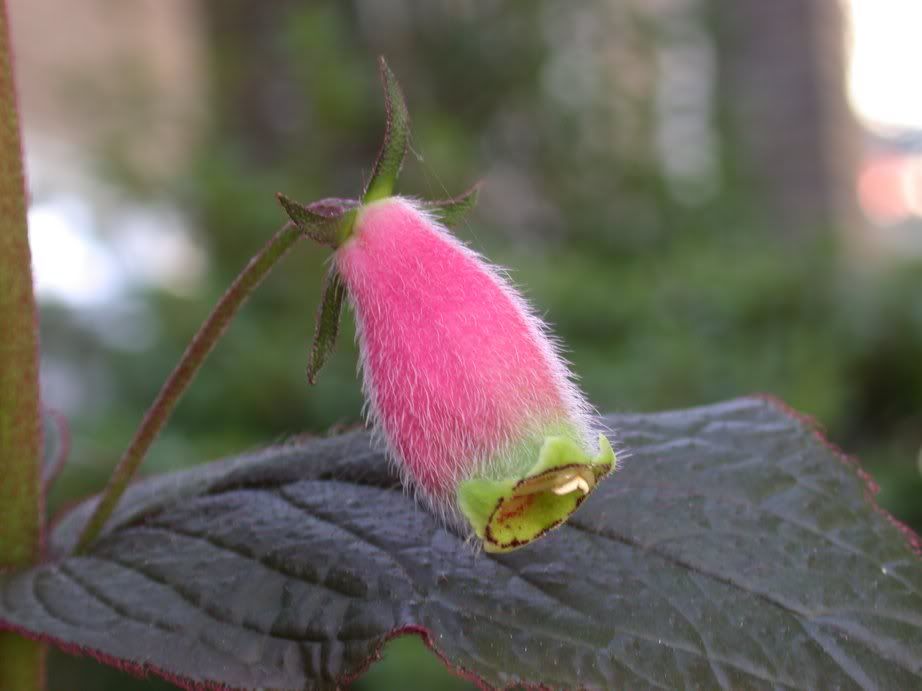Published!
One of the true joys of science is seeing the results of your research finally in print. I am second author on a paper that was just published in a botanical journal. Here's the citation in all its glory (click on title for link to abstract):
Roalson, E.H., J.K. Boggan & L.E. Skog. 2005. Reorganization of tribal and generic boundaries in the Gloxinieae (Gesneriaceae: Gesnerioideae) and the description of a new tribe in the Gesnerioideae, Sphaerorrhizeae. Selbyana 25(2): 225-238.
This paper deals with the classification of a group my colleagues and I have been working on for several years, and follows our previous papers on the phylogeny of the group (click here and here for abstracts). In the current paper we have reclassified and reorganized several genera in the family Gesneriaceae to better reflect the relationships we have discovered. Without going into the details, what's I think is great about this research is that the molecular phylogenies, morphology, biogeography, patterns of chromosome numbers, etc. all tie together so well and all point clearly to the evolution of this group over a long period of time. Although the papers don't go into it this group is also interesting because although there has been a huge morphological diversification within the group, most of the members are still capable of hybridizing with each other. If creationists are going to say these are all the same "kind" of plants, they may as well just throw in the towel and accept macroevolution once and for all.
This may not be the most exciting and groundbreaking research (well, it is to me) but I think seemingly obscure papers like this one, and the research on which they are based, are important precisely because they are so common, so ordinary and so unremarkable, because it's those of us in the trenches of evolutionary research who demonstrate, over and over, the overwhelming evidence for evolution. It's something that simply makes sense, something that we take for granted, something that makes sense of everything without any need to postulate unknown causes or intelligent designers or manipulating creators.
And I'm just one of many, many, many scientists working on things like this. I check out the new journals in my museum's library every few days; there are dozens of journals that come in every week, most of which are either tangential to or far outside my own field yet among them I generally find at least a few articles of interest each time I check. I can't do much more than browse as it's simply impossible to keep up with the literature in my own field (systematic botany), much less the broader field of evolutionary biology in general. There are thousands of biologists out there doing work that takes evolution for granted, and there simply is no controversy over whether or not evolution is real. I just wish the public could see that.
But you know something? There are far worse things in life than working on the evolutionary relationships of a group of plants with pretty flowers. Here are two of the genera we were working with on this paper:

Achimenes hybrid

Seemannia purpurascens (formerly Gloxinia purpurascens)
Click here for slideshow of Gesneriaceae
Roalson, E.H., J.K. Boggan & L.E. Skog. 2005. Reorganization of tribal and generic boundaries in the Gloxinieae (Gesneriaceae: Gesnerioideae) and the description of a new tribe in the Gesnerioideae, Sphaerorrhizeae. Selbyana 25(2): 225-238.
This paper deals with the classification of a group my colleagues and I have been working on for several years, and follows our previous papers on the phylogeny of the group (click here and here for abstracts). In the current paper we have reclassified and reorganized several genera in the family Gesneriaceae to better reflect the relationships we have discovered. Without going into the details, what's I think is great about this research is that the molecular phylogenies, morphology, biogeography, patterns of chromosome numbers, etc. all tie together so well and all point clearly to the evolution of this group over a long period of time. Although the papers don't go into it this group is also interesting because although there has been a huge morphological diversification within the group, most of the members are still capable of hybridizing with each other. If creationists are going to say these are all the same "kind" of plants, they may as well just throw in the towel and accept macroevolution once and for all.
This may not be the most exciting and groundbreaking research (well, it is to me) but I think seemingly obscure papers like this one, and the research on which they are based, are important precisely because they are so common, so ordinary and so unremarkable, because it's those of us in the trenches of evolutionary research who demonstrate, over and over, the overwhelming evidence for evolution. It's something that simply makes sense, something that we take for granted, something that makes sense of everything without any need to postulate unknown causes or intelligent designers or manipulating creators.
And I'm just one of many, many, many scientists working on things like this. I check out the new journals in my museum's library every few days; there are dozens of journals that come in every week, most of which are either tangential to or far outside my own field yet among them I generally find at least a few articles of interest each time I check. I can't do much more than browse as it's simply impossible to keep up with the literature in my own field (systematic botany), much less the broader field of evolutionary biology in general. There are thousands of biologists out there doing work that takes evolution for granted, and there simply is no controversy over whether or not evolution is real. I just wish the public could see that.
But you know something? There are far worse things in life than working on the evolutionary relationships of a group of plants with pretty flowers. Here are two of the genera we were working with on this paper:

Achimenes hybrid

Seemannia purpurascens (formerly Gloxinia purpurascens)
Click here for slideshow of Gesneriaceae

